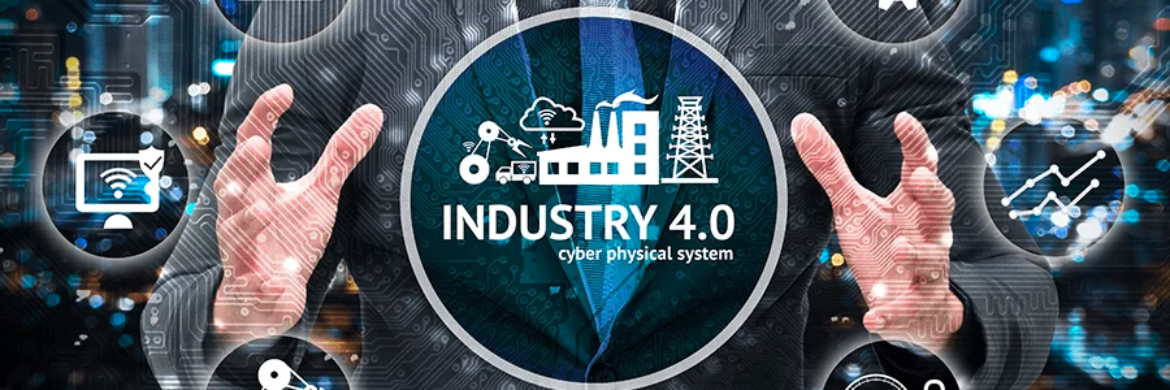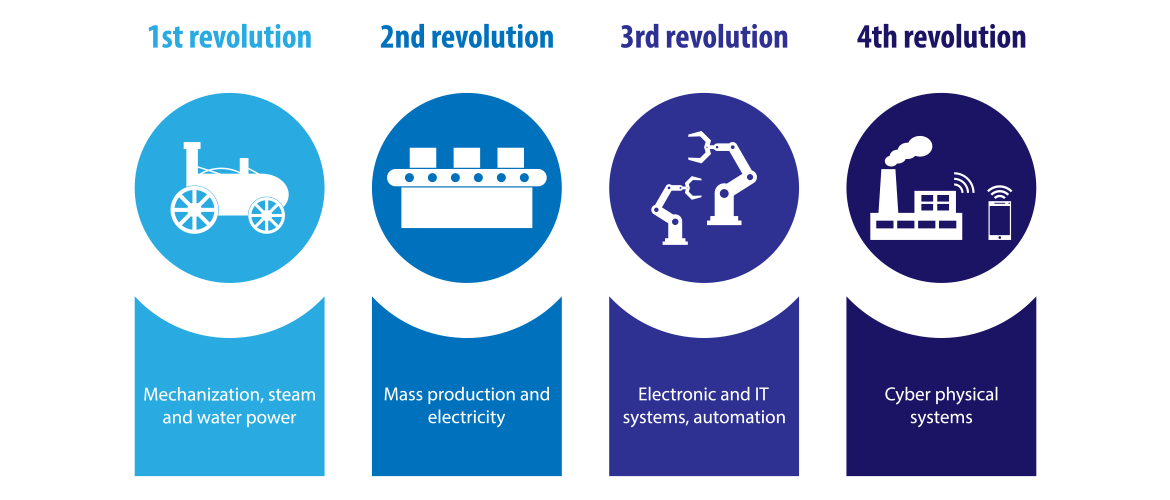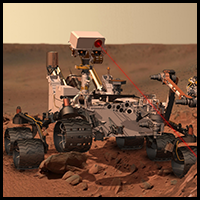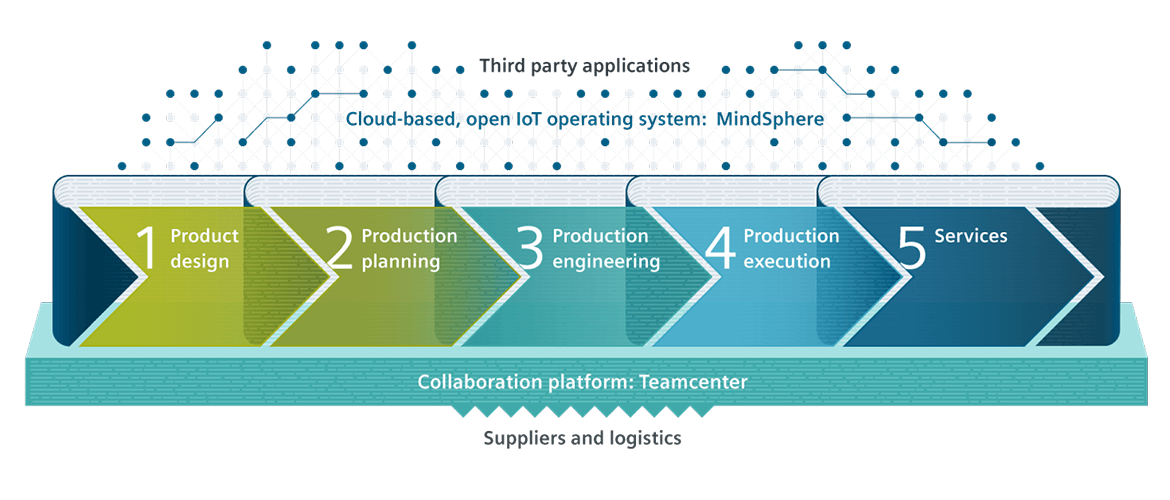Customer Service

First Industrial Revolution – during 18th century the introduction of steam engine allowed for mechanization of manual work.
Second Industrial Revolution – early 20th century brought along electrification and with it modern mass production concepts and technologies.
Third Industrial Revolution – more recent decades marked the introduction and large scale deployment of electronics and computer technology in manufacturing environment leading to production automation.
As the cycle never ends the natural question is what will the next Industrial Revolution look like?
The future of manufacturing has, at its core, the pervasive networking of people, machines, and ‘things’, which will create a completely new production environment – in other words, the networked factory. The fourth Industrial Revolution is knocking on the door as we speak!


Big Data to Smart Data
What do we mean? Digitalization and networking are all around us – and have been for quite a while now. Mobile devices offering endless networked applications, computerized automobiles soon to be self-driving, online shopping, and smart refrigerators notifying you when supplies are running low are just a few examples. Many technologies affecting us as consumers will also have a major impact in the industrial space. This leads us to Big Data + Analytics = Smart Data.
This global topic is driven by customers demanding more personalized products but reluctant to pay a premium. Markets are changing at an unprecedented pace requiring increased manufacturing flexibility, more efficient use of resources and energy while maintaining the quality. Digitization is changing everything and smart data can help decrease a product’s time-to-market, meet the demand for personalized products, and reduce the end user cost for new products.
Digitization of manufacturing
This latest Industrial revolution – or Industry 4.0 – is the backbone of future manufacturing in which machines, systems and sensors, worldwide, will communicate with each other. Sharing information will allow companies to achieve greater flexibility and faster response to market demands.
We are in the process of merging the physical and virtual worlds together. In such environment, every process or piece of machinery can be fully modeled, simulated and tested before being manufactured and /or commissioned. This will help companies avoid costly errors and minimizing time-to-market.
One example of this modelling is the Mars Curiosity Rover, which was tested 8,000 times using Siemens PLM software before it landed in Mars in 2012.
Autonomous Factories
With the merging of IT, telecommunications and manufacturing, having self-organizing factories may become reality in the not so distant future. The factories of the future will be able to adapt and organize themselves without human commands. Orders will be received and translated into production information, thereby initiating the manufacturing process. However, this won’t eliminate the need for human capital. People will still be relevant in the Industry 4.0 environment as the creative force behind these processes and procedures. Keep in mind that the required set of skills will not be the same as they are today. A workforce that is extensively trained on technologies and advanced equipment will be necessary to support the new world’s needs.




The foundation has definitely been laid and many of the required building blocks are currently being used in many industries – virtual reality as a method of digital planning, 3D printing, industrial robots and the raise of Internet of Things, just to name a few. What is left is to connect the dots and bring all these technologies together in an integrated environment. This will fundamentally transform the industry as we know it and make product defects an extinct species.
Second Industrial Revolution – early 20th century brought along electrification and with it modern mass production concepts and technologies.
Siemens has already implemented this concept in their most digitally advanced manufacturing facility which produces industrial controls in Amberg (Bavaria), Germany. Products and machines communicate with each other allowing products to control their own production. This has led to an impressive increase in production volume (eightfold over the past 20 years) while maintaining same production space with only a slight change in workforce number.


We are already living in a world of smart and connected products where one single innovation can bring an entire market on the brink of extinction. Challenges faced by manufacturing companies are significant and digitization is changing all aspects of life as well as current business models. This transformation brings together threats as well as new opportunities. It forces industrial enterprises to search for new ways of significantly reducing time to market, improving flexibility, increasing quality, becoming more efficient with energy and resources consumption, while taking the necessary precautions against cyber-attacks. A holistic approach must be considered. This can be a daunting task requiring proper tools for implementing and managing the transformation.
Siemens answer to Industry 4.0 and the challenges of this new environment is the Digital Enterprise Suite. It is geared towards modern manufacturing companies looking to streamline and digitize their business processes including the integration of their supply chain. The implementation can start at any point of the value chain (product design to service) and can be gradually extended depending on requirements. Continuous process optimization is accomplished through MindSphere which is collects and analyzes data plus provides feedback throughout the value chain resulting in a closed loop.
This powerful suite of software enables the creation of a digital image of the entire value chain with the end result being an intelligent data model (aka Digital Twin). This streamlines the process of turning ideas into reality.
In an entirely digital environment, Digital Twin is used for simulation, testing, validation, product and production process optimization leading to the elimination of costly errors and significantly reducing time-to-market.
E.B. Horsman’s Automation & Industrial Controls group can find you everything you need in time to board the Industry 4.0 train. Act now and become a leader in the fourth industrial revolution.


Cable basket trays are more cost efficient, reliable, adaptable to change, and easy to maintain. Order your cable trays to protect your wiring…


Buy MOGAS to solve issues that routinely plague power plants – leaking valves, seat erosion, blown packing, and the inability to isolate critical…


Everything you need to shop for a Rittal Enclosure: from selecting the enclosure and cooling system to power distribution and…
Customer Service
1.888.467.7626